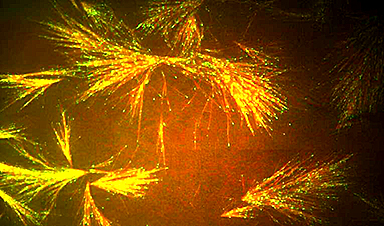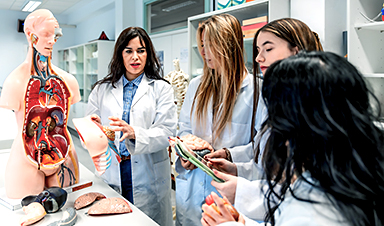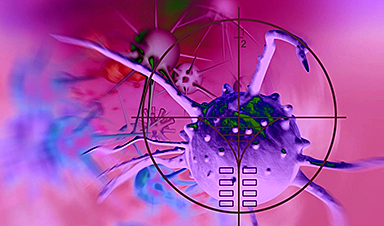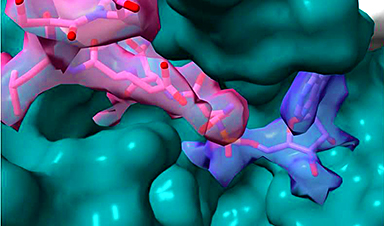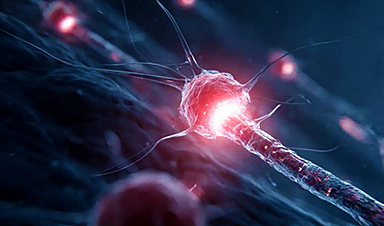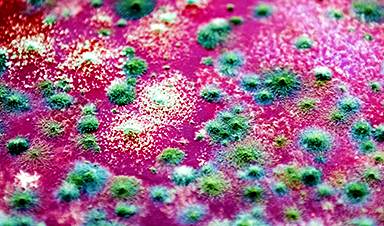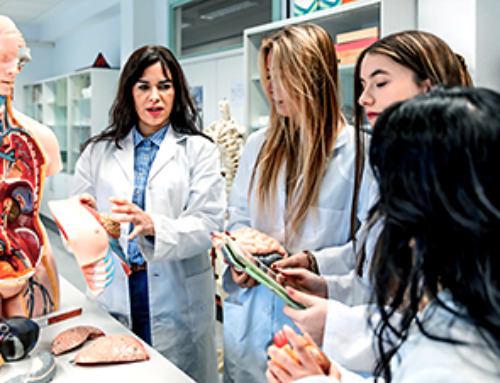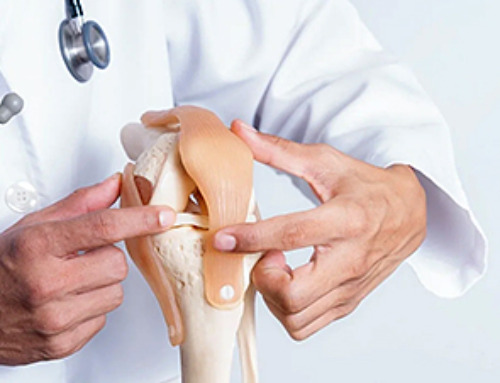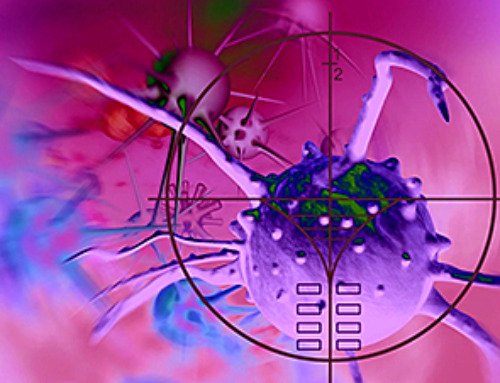Princeton researchers have learned to harness the gossamer scaffolding that maintains the structure of living cells and used it to develop a nanotechnology platform. The technique eventually could lead to advances in soft robotics, new medicines, and the development of synthetic systems for high-precision biomolecular transport.
Inside cells, tubulin proteins form long, incredibly thin rods called microtubules. Networks of microtubules grow like tree roots into branching systems that form a primary element of the cytoskeleton, which gives cells their shape and enables them to divide.
Besides helping to maintain a cell’s shape, the microtubular scaffolding also works like a molecular railway. Specialized motor proteins carry molecular loads along the microtubule filaments. Slight changes in the microtubules’ molecular makeup act like signposts to adjust the chemical carriers’ courses, sending molecular payloads to their destinations.
At Princeton, questions about these intracellular networks led to a collaboration between Sabine Petry, an associate professor of molecular biology, and Howard Stone, a professor of mechanical and aerospace engineering who specializes in fluid mechanics.
“The biological systems we were inspired by were axons,” said Meisam Zaferani, one of the lead researchers. “Axons are long protrusions coming out of a neuron that allow for directed molecular transport.”
In the nervous system, microtubule networks work both as structures connecting nerve cells and as a means for the nervous system to transmit chemical signals that produce sensation. Zaferani said scientists are still working to understand elements of microtubule growth and chemical properties. But he said the research team wanted to know if they could harness the networks for practical applications.
“Engineers and physicists have started to study microtubules as components to build novel materials and technologies,” he said. “There are many mysteries about their fundamental properties, but we know enough to start to think about how we could engineer these systems.”
With co-researcher Ryungeun Song, Zaferani worked to create a system to control the growth of microtubules in the cleanroom labs at the Princeton Materials Institute.
Using specialized equipment in micro/nanofabrication and microfluidics, the researchers precisely controlled the growth of the microtubule branches. They were able to adjust the angle and direction of growth and were able to create microstructures in which growth direction of microtubules was regulated.
Zaferani said the Materials Institute offered a unique mix of equipment and expertise that would be difficult to find anywhere else.
The researchers plan to follow up by directing chemical cargo along the microtubule branches. The goal is to build a controllable chemical transport system. In a related effort, they are also examining the use of microtubule networks as a tool like microtweezers that exert physical force on incredibly tiny objects.
Petry’s research group has long collaborated with Stone, the Donald R. Dixon ’69 and Elizabeth W. Dixon Professor of Mechanical and Aerospace Engineering, at the intersection of biology and fluid dynamics. They hired Song, a mechanical engineer who had focused on microfluidics in his graduate work; and Zaferani, a biophysicist who had studied the cues that help mammalian sperm cells navigate toward an egg.
Stone, who frequently collaborates with colleagues in engineering and the natural sciences, said mixing expertise from varied disciplines often leads to remarkable results.
“I find it very interesting to find problems that involve fluid mechanics in other fields,” he said. “Often I find a topic that is poorly understood to the scientists on the other side and poorly understood by myself, and together we work to figure it out.”
More information: Meisam Zaferani et al, Building on-chip cytoskeletal circuits via branched microtubule networks, Proceedings of the National Academy of Sciences (2024). DOI: 10.1073/pnas.2315992121
Journal information: Proceedings of the National Academy of Sciences
News
Repurposed drugs could calm the immune system’s response to nanomedicine
An international study led by researchers at the University of Colorado Anschutz Medical Campus has identified a promising strategy to enhance the safety of nanomedicines, advanced therapies often used in cancer and vaccine treatments, [...]
Nano-Enhanced Hydrogel Strategies for Cartilage Repair
A recent article in Engineering describes the development of a protein-based nanocomposite hydrogel designed to deliver two therapeutic agents—dexamethasone (Dex) and kartogenin (KGN)—to support cartilage repair. The hydrogel is engineered to modulate immune responses and promote [...]
New Cancer Drug Blocks Tumors Without Debilitating Side Effects
A new drug targets RAS-PI3Kα pathways without harmful side effects. It was developed using high-performance computing and AI. A new cancer drug candidate, developed through a collaboration between Lawrence Livermore National Laboratory (LLNL), BridgeBio Oncology [...]
Scientists Are Pretty Close to Replicating the First Thing That Ever Lived
For 400 million years, a leading hypothesis claims, Earth was an “RNA World,” meaning that life must’ve first replicated from RNA before the arrival of proteins and DNA. Unfortunately, scientists have failed to find [...]
Why ‘Peniaphobia’ Is Exploding Among Young People (And Why We Should Be Concerned)
An insidious illness is taking hold among a growing proportion of young people. Little known to the general public, peniaphobia—the fear of becoming poor—is gaining ground among teens and young adults. Discover the causes [...]
Team finds flawed data in recent study relevant to coronavirus antiviral development
The COVID pandemic illustrated how urgently we need antiviral medications capable of treating coronavirus infections. To aid this effort, researchers quickly homed in on part of SARS-CoV-2's molecular structure known as the NiRAN domain—an [...]
Drug-Coated Neural Implants Reduce Immune Rejection
Summary: A new study shows that coating neural prosthetic implants with the anti-inflammatory drug dexamethasone helps reduce the body’s immune response and scar tissue formation. This strategy enhances the long-term performance and stability of electrodes [...]
Scientists discover cancer-fighting bacteria that ‘soak up’ forever chemicals in the body
A family of healthy bacteria may help 'soak up' toxic forever chemicals in the body, warding off their cancerous effects. Forever chemicals, also known as PFAS (per- and polyfluoroalkyl substances), are toxic chemicals that [...]
Johns Hopkins Researchers Uncover a New Way To Kill Cancer Cells
A new study reveals that blocking ribosomal RNA production rewires cancer cell behavior and could help treat genetically unstable tumors. Researchers at the Johns Hopkins Kimmel Cancer Center and the Department of Radiation Oncology and Molecular [...]
AI matches doctors in mapping lung tumors for radiation therapy
In radiation therapy, precision can save lives. Oncologists must carefully map the size and location of a tumor before delivering high-dose radiation to destroy cancer cells while sparing healthy tissue. But this process, called [...]
Scientists Finally “See” Key Protein That Controls Inflammation
Researchers used advanced microscopy to uncover important protein structures. For the first time, two important protein structures in the human body are being visualized, thanks in part to cutting-edge technology at the University of [...]
AI tool detects 9 types of dementia from a single brain scan
Mayo Clinic researchers have developed a new artificial intelligence (AI) tool that helps clinicians identify brain activity patterns linked to nine types of dementia, including Alzheimer's disease, using a single, widely available scan—a transformative [...]
Is plastic packaging putting more than just food on your plate?
New research reveals that common food packaging and utensils can shed microscopic plastics into our food, prompting urgent calls for stricter testing and updated regulations to protect public health. Beyond microplastics: The analysis intentionally [...]
Aging Spreads Through the Bloodstream
Summary: New research reveals that aging isn’t just a local cellular process—it can spread throughout the body via the bloodstream. A redox-sensitive protein called ReHMGB1, secreted by senescent cells, was found to trigger aging features [...]
AI and nanomedicine find rare biomarkers for prostrate cancer and atherosclerosis
Imagine a stadium packed with 75,000 fans, all wearing green and white jerseys—except one person in a solid green shirt. Finding that person would be tough. That's how hard it is for scientists to [...]
Are Pesticides Breeding the Next Pandemic? Experts Warn of Fungal Superbugs
Fungicides used in agriculture have been linked to an increase in resistance to antifungal drugs in both humans and animals. Fungal infections are on the rise, and two UC Davis infectious disease experts, Dr. George Thompson [...]
